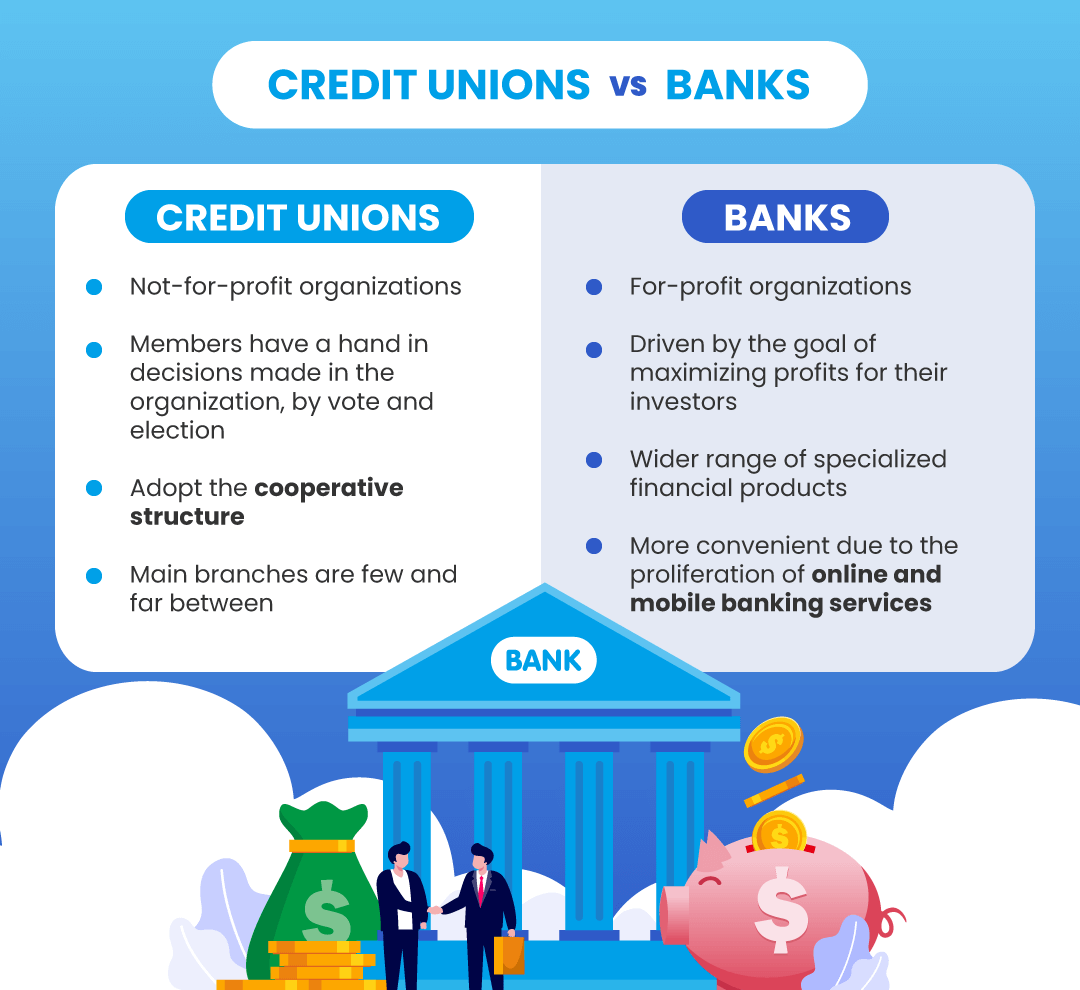Wyoming Credit Union: Trusted Financial Solutions for every single Demand
Wiki Article
The Ultimate Guide to Recognizing Cooperative Credit Union

Cooperative credit union stand as unique economic entities, rooted in concepts of common support and member-driven operations. However, beyond their fundamental values, recognizing the intricate workings of lending institution involves a much deeper expedition. Unraveling the intricacies of subscription eligibility, the development of services supplied, and the distinct advantages they bring needs an extensive exam. As we navigate with the ins and outs of lending institution, an insightful journey awaits to clarify these member-focused organizations and how they differ from traditional financial institutions.
What Are Debt Unions?
Credit rating unions are member-owned banks that use a series of financial solutions to their participants. Unlike standard banks, debt unions operate as not-for-profit companies, indicating their primary focus is on serving their participants instead of maximizing revenues. Members of a cooperative credit union normally share a typical bond, such as helping the very same company, belonging to the very same neighborhood, or being part of the very same company.One of the vital benefits of cooperative credit union is that they often offer higher rates of interest on interest-bearing accounts and reduced rates of interest on fundings compared to financial institutions. Wyoming Credit Union. This is since cooperative credit union are structured to benefit their members straight, permitting them to hand down their revenues in the form of far better prices and fewer charges. In addition, cooperative credit union are known for their individualized client service, as they prioritize building partnerships with their members to understand their special economic needs and objectives
Background and Development of Lending Institution
The roots of member-owned financial cooperatives, recognized today as lending institution, trace back to a time when areas sought alternatives to standard financial institutions. The idea of cooperative credit union come from the 19th century in Europe, with Friedrich Wilhelm Raiffeisen usually attributed as the pioneer of the cooperative banking movement. Raiffeisen started the very first acknowledged lending institution in Germany in the mid-1800s, stressing community assistance and self-help concepts.The advancement of cooperative credit union continued in The United States and Canada, where Alphonse Desjardins established the initial credit score union in Canada in 1900. Quickly after, in 1909, the first U.S. cooperative credit union was developed in New Hampshire by a team of Franco-American immigrants. These very early cooperative credit union operated on the essential principles of shared assistance, autonomous control, and member ownership.
In time, lending institution have actually expanded in popularity worldwide due to their not-for-profit framework, concentrate on offering participants, and providing affordable monetary product or services. Today, cooperative credit union play a crucial duty in the economic market, providing community-oriented and easily accessible banking alternatives for individuals and organizations alike.

Membership and Eligibility Standards
Subscription at a cooperative credit union is usually restricted to individuals meeting particular qualification standards based on the establishment's starting principles and regulatory requirements. These standards frequently consist of factors such as geographic area, work condition, membership in specific organizations, or association with particular groups. Lending institution are understood for their community-oriented strategy, which is reflected in their subscription demands. Credit Union in Wyoming. Some debt unions might just offer individuals that live or function in a specific area, while others may be tailored to employees of a particular business or members of a particular association.Furthermore, credit score unions are structured as not-for-profit organizations, suggesting that their main goal is to serve their members as opposed to create revenues for shareholders. This focus on member service frequently translates right into even more tailored attention, reduced costs, and affordable rates of interest on financial savings and finances accounts. By meeting the qualification criteria and becoming a participant of a lending institution, people can access a series of financial services and products customized to their details requirements.
Services and Products Supplied
One of the key facets that establishes credit report unions apart is the diverse range of monetary solutions and items they provide to their members. Credit score unions normally supply conventional financial solutions such as savings and checking accounts, loans, and credit report cards.Additionally, lending institution usually offer convenient online and mobile financial options for members to easily manage their financial resources. They may use benefits such as common branching, enabling members to access their accounts at other cooperative credit union across the country. Some cooperative credit union likewise supply insurance policy items like auto, home, and life insurance coverage to help members shield their possessions and enjoyed ones.

Benefits of Banking With Credit Unions
When thinking about monetary organizations, discovering the advantages of financial my review here with credit report unions exposes unique benefits for members looking for individualized service and affordable prices. Unlike big financial institutions, credit unions are member-owned and prioritize building strong connections with their members. On the my website whole, financial with a debt union can give a much more personalized, cost-efficient, and member-centric economic experience.Conclusion
In conclusion, credit scores unions stand out as member-owned economic institutions that focus on serving their participants over making the most of earnings. With beginnings dating back to 19th century Europe, credit report unions comply with concepts of common aid and member ownership.
Credit unions are member-owned financial institutions that use a variety of financial solutions to their participants. The concept of credit rating unions come from in the 19th century in Europe, with Friedrich Wilhelm Raiffeisen often credited as the leader of the cooperative banking motion.The evolution of credit unions proceeded in North America, where Alphonse Desjardins established the initial credit rating union in Canada in 1900. Debt unions typically provide conventional financial solutions such as cost savings and examining accounts, car straight from the source loans, and credit score cards.When taking into consideration financial organizations, discovering the advantages of banking with debt unions discloses one-of-a-kind benefits for participants looking for personalized service and affordable prices.
Report this wiki page